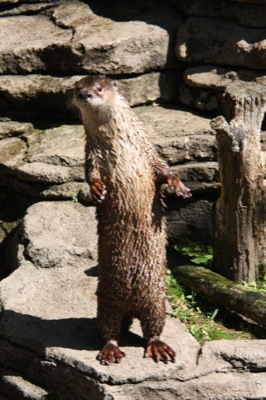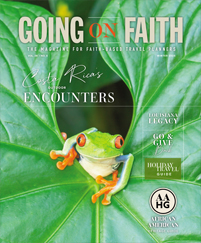
Midwesterners may be the biggest animal lovers in the country.
I haven’t done a scientific survey on the subject, but I can tell you that after traveling around the United States, I’ve found that the Midwest seems to have more zoos than any other region of the country. Although most of us are used to seeing zoos in major metro cities, Midwesterners go a step further, with animal parks in smaller cities and towns throughout the area.
Some of the institutions, such as the St. Louis Zoo and the Columbus Zoo, are among the most highly regarded zoos in the country. The Indianapolis Zoo combines traditional animal exhibits with an aquarium and a botanical garden. But the smaller zoos in smaller cities have their own advantages, often offering more intimate visits and up-close animal encounters. Battle Creek, Michigan’s Binder Park Zoo is known for its natural woodland setting, and the Blank Park Zoo in Des Moines, Iowa, gives guests an inside look at the fascinating process of taming a lion. In Salina, Kansas, Rolling Hills Wildlife adventure presents both live and mounted exotic animals from around the world.
Blank Park Zoo
Des Moines, Iowa
Des Moines’ Blank Park Zoo proves that bigger isn’t always better. This 22-acre park features a wide variety of exhibits, including an indoor discovery center with exotic birds and plants, as well as a 15,000-gallon salt-water aquarium. Outdoors, a large-cats exhibit has tigers, snow leopards and lions that are part of fascinating live programs.
“We do a lion demonstration every day during the summer,” said director of marketing Ryan Bickel. “It’s a conditioning and training program where they’re training the animals to participate in their own health and animal care. So they’ll train them to present a paw so that we can do a toenail clip or to present a hindquarter if we need to do a blood draw.”
Other highlights at the zoo include river otter and giant-tortoise exhibits. Visitors can also interact with some of the animals, feeding and petting giraffes, goats, llamas and donkeys.
Two new exhibits this summer bring animals from both the United States and abroad.
“In June, we’re opening our brand-new Australian adventure,” Bickel said. “It will be an immersive exhibit, with wallabies, cocobarras, emus and an Australian aviary. In July, we’ll be opening our new sea-lion pool, with California sea lions and harbor seals.”
www.blankparkzoo.com
Columbus Zoo
Ohio
Although the institution has been around since 1927, it was executive director Jack Hannah who put the Columbus Zoo on the map with his late-night television appearances beginning in the 1980s. Today, Hannah still works with the zoo, which has grown to include a number of impressive exhibits.
“We’re really known for our gorilla collection,” said Jennifer Wilson, communications manager at the zoo. “We have the first gorilla ever born in a zoo, and she’s now the oldest gorilla in a zoo. Her name is Colo — short for Columbus, Ohio — and a lot of people come to meet and see her.”
In addition to the primates, the zoo has a manatee rehabilitation and recovery program that is one the few outside of Florida. Visitors can now see four manatees that are being rehabilitated and that will eventually return to the wild. The newest exhibit area, Polar Frontier, brings polar bears back to the zoo after an absence of nearly 20 years, and the pachyderm exhibit has a baby elephant born in 2009.
Groups visiting the zoo can choose from a number of interesting experiences, among them a visit to the on-site water park Zoombezi Bay and a behind-the-scenes tour.
“One of our special options is the twilight tour,” Wilson said. “It’s a tour that happens after the zoo is closed. We drive you around in VIP golf carts and give you a tour when no one else is here.”
Indianapolis Zoo
Indiana
With a traditional animal park, an indoor aquarium and a botanical garden, the Indianapolis Zoo offers visitors an abundance of sights and activities. At White River State Gardens, groups can tour the conservatory to see an exhibit of hundreds of orchids; in the Oceans building aquarium, zookeepers put on sea lion and dolphin shows several times a day.
In the zoo itself, a quartet of new exhibits comes online this year.
“The big exhibit that is opening up this year is our all-new tiger forest, featuring our new Amur tigers,” said Judith Gagen, the zoo’s director of communications. “You can walk between two tiger yards, and the only thing separating you from them is an inch and a half of glass. It’s a viewing experience unlike anything else you’ve ever had.”
In addition to the tiger area, the zoo will debut new bat and warthog exhibitions this year. These animals join a family of 3,800 creatures, representing some 320 species that hail from Africa, the Caribbean, Asia and North America.
Behind-the-scenes opportunities give groups a hands-on encounter with the animals.
“One of the things we do are adventure tours, where you have three behind-the-scenes experiences with animals,” Gagen said. “It can range from scratching a rhino’s ear to feeding fish, penguins or a walrus. You get up close enough where you can touch them.”










